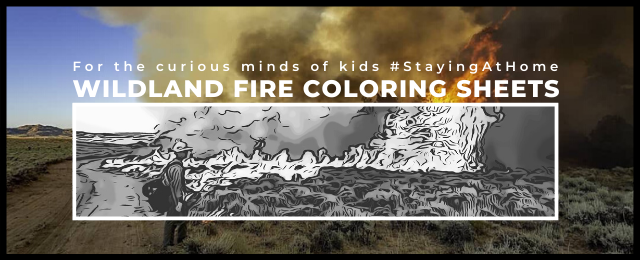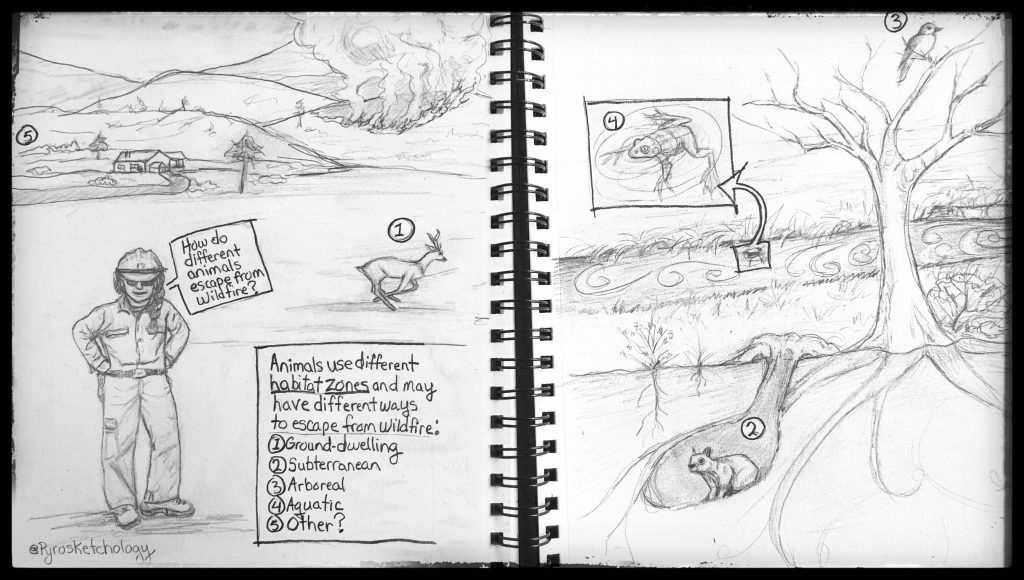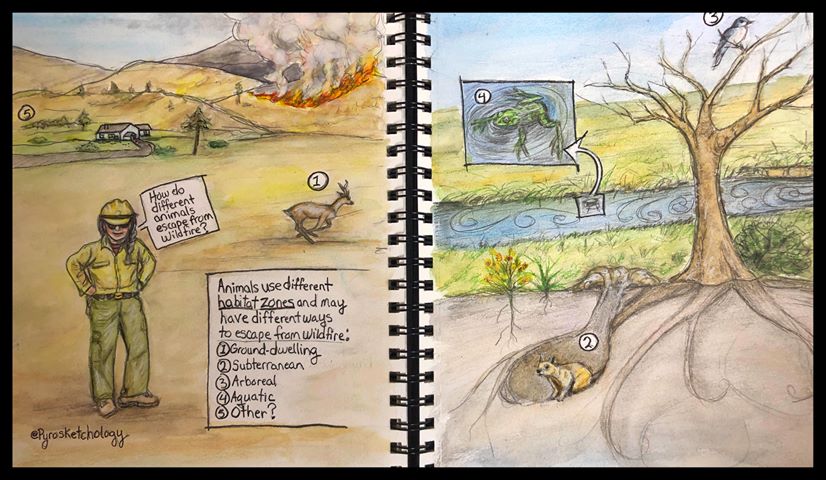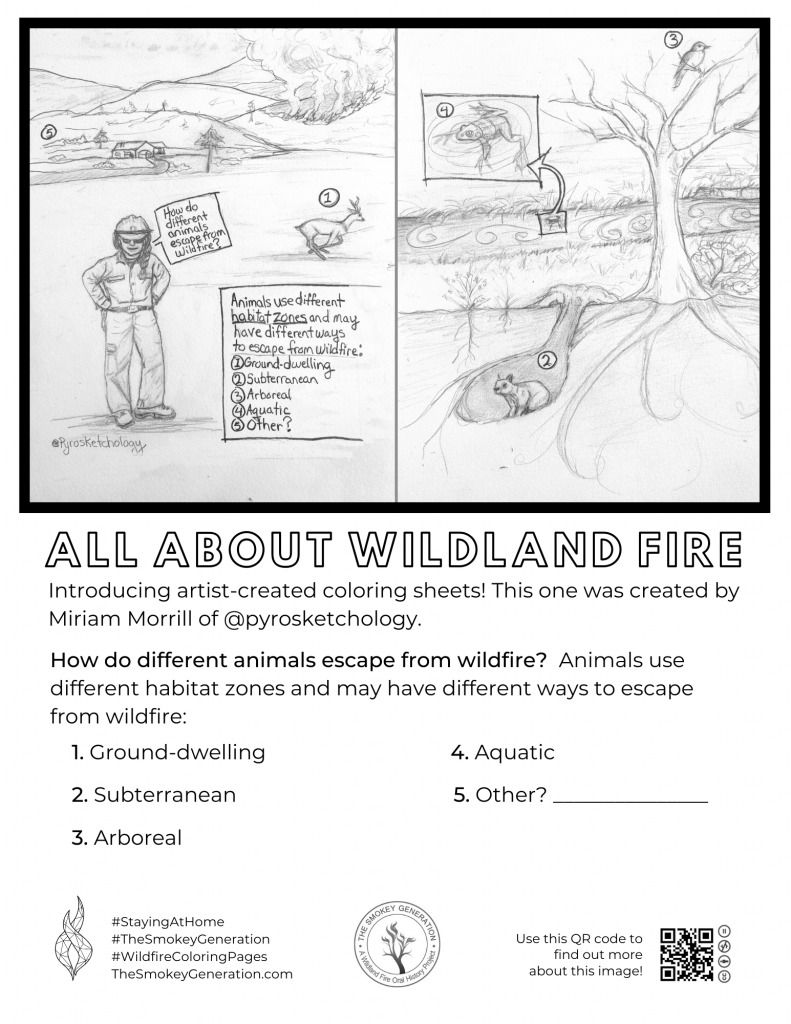
This coloring sheet was hand-drawn by an amazing artist named Miriam Morrill who is the state Fire Mitigation and Education Specialist for the Bureau of Land Management – California (USA). She also runs a Facebook page that is dedicated to natural journaling and focused on wildland fire, called Pyrosketchology. Nature journaling is the process of recording your observations about birds, animals, plants, trees, weather, and other natural things (including wildfire!). Perhaps you can try it while you are #stayingathome!

Here is Miriam’s coloring sheet in full color!

How animals respond to fire depends a lot on their age, health and capabilities and where they live, feed and breed (habitat zones). What habitat zones do you see in the coloring page?
Wildfire fire impacts to animals, and populations, depend a lot on their health and habitat zone in combination with the time of year a fire burns, how large it grows, how hot it burns, and how frequently fires occur. What do you think the animals in different habitat zones do to escape wildfire?
Ground-dwelling habitat zone: Animals that spend most of their lives and raise families in this zone can escape the fire’s heat and flames by running away, hiding behind rocks and under logs, crawling into other animal burrows or escaping into water. Their size, speed, and the distance to shelter or safe zone is important. Some of these animals include deer, coyotes, some squirrels and rodents, ground-nesting birds, tortoises, toads and some many smaller creatures like snails, spiders and insects.
Subterranean habitat zone: Animals that spend most of their lives and raise families in this zone can avoid the fire’s heat and flames by taking shelter underground. While hiding underground they may be impacted by how long a fire burns, how deep the heat is transferred into the ground and by smoke. These animals can be tiny earthworms, lizards, snakes, some species of squirrels, rabbits, and mice.
Arboreal habitat zone: Animals living in vegetation above the ground for most of their lives and most feed and raise families in the shrub and tree canopy. Arboreal animals are not just birds, but some species squirrels, frogs and bats.
Aquatic habitat zone: Animals that live entirely or have some life phases in water like fish, some mollusks, amphibians and insects, otters, beavers and some birds. Many will escape the fire’s heat and flames in the water and some are more mobile and can mover further away. Some of the later fire effects may have stronger influence on these species with possible changes in temperature, soil and debris within the water.
Other habitat zones? Human/Urban zones? How do people and communities escape from a wildfire? Many families and communities develop escape plans that outline how they’ll leave their home, what they’ll take with them, where to meet and other things they need to do. Visit ReadyforWildfire.org or look up Ready Set Go for more information on how to prepare for wildfire.
Click on the image below to download sheets in different languages.

*
Be the first to comment.